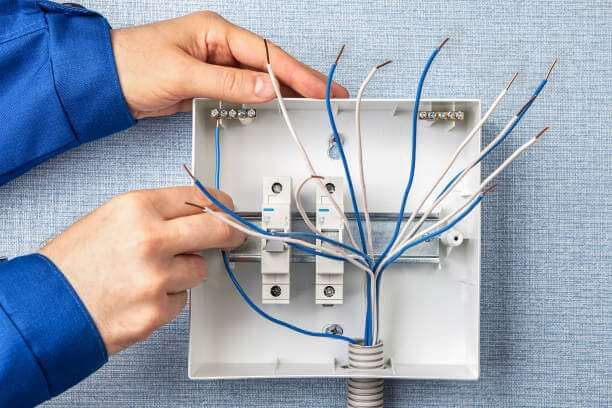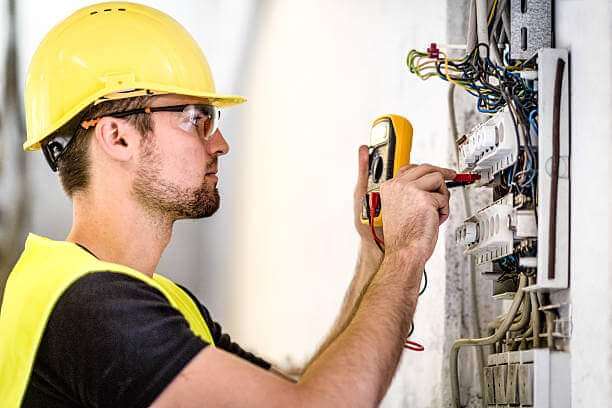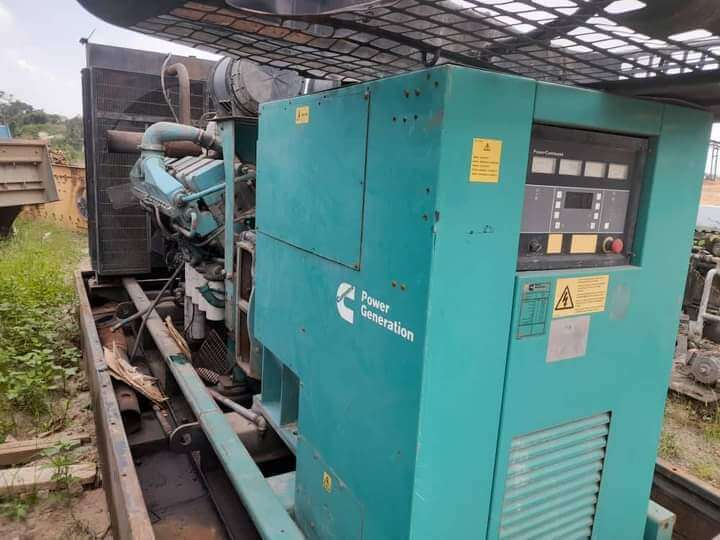As an Amazon Associate, we earn from qualifying purchases. This does not affect the price you pay or the quality of the products you buy. For more information, please read the full affiliate disclosure here.
Electrical wiring is the process of connecting various devices and components that use electricity. Electrical wiring can be classified into different types based on the amount of voltage or electrical potential difference that it carries.
One of these types is low voltage wiring, which is a specialized form of electrical wiring that uses 50 volts or less of electricity. In contrast, most wall outlets in homes and buildings use standard voltage wiring, which carries 120 or 240 volts of electricity.
Low voltage wiring has various applications in homes and buildings, especially for devices and systems that do not require a lot of power or need to be controlled remotely. Some examples of these devices and systems are thermostats, doorbells, security systems, network cables, and landscape lighting.
However, it also has some challenges and limitations that need to be considered. Unlike standard voltage wiring, which operates on the main electrical system of a home or building, low voltage wiring operates on a separate network that requires a different design and installation process.
This article will explore the benefits and challenges of low voltage wiring, the types of low voltage wiring available, some examples of its use, and the law governing low voltage wiring in different settings.
Benefits of Low Voltage Wiring

Low voltage wiring offers several advantages over standard voltage wiring which is known as the main wiring system in most home applications. Having said that, here are some of the benefits of low voltage wiring.
1. Safety
Low voltage wiring poses less risk of electric shock, fire, or damage to equipment as it carries less current and heat than high voltage wiring. Low voltage wiring can also be buried in direct contact with the earth without the need for conduit or insulation.
2. Efficiency
Low voltage wiring can reduce energy consumption and costs, as it can deliver more power with less resistance and voltage drop than high voltage wiring. Low voltage wiring can also support smart devices and systems that can automate and optimize the use of electricity, such as dimmers, sensors, timers, and controllers.
3. Flexibility
Low voltage wiring can accommodate a variety of devices and functions, as it can carry different types of signals, such as analog, digital, audio, video, and data. Low voltage wiring can also be easily installed and modified, as it does not require junction boxes, switches, or outlets and can be connected with simple push-fit connectors or wire nuts.
4. Quality
Low voltage wiring can enhance the performance and reliability of devices and systems, as it can provide a cleaner and more stable signal than high voltage wiring. Low voltage wiring can also reduce interference and noise from other sources, such as power lines, appliances, or radio waves.
RECOMMENDED READ:- FAQs: What Kind of Generator is Safe for Electronics? (Answered)
Challenges and Limitations of Low Voltage Wiring
Low voltage wiring also presents some challenges and limitations, despite having benefits. Among the challenges of this kind of wiring are the following:
1. Design
Low voltage wiring requires a careful and comprehensive design, as it involves many factors, such as the type, length, and gauge of the wire, the number and location of the devices, the power and signal requirements, the airflow and cooling issues, and the redundancy and scalability of the system. A poor design can result in poor performance, inefficiency, or failure of the system.
2. Installation
Low voltage wiring requires a skilled and experienced installer, as it involves many steps, such as planning, measuring, cutting, stripping, crimping, splicing, routing, securing, testing, and labeling the wires. A faulty installation can result in short circuits, loose connections, signal loss, or damage to the devices or the system.
3. Maintenance
Low voltage wiring requires regular and proper maintenance, as it can deteriorate over time due to environmental factors, such as moisture, corrosion, rodents, insects, or plants. Neglected maintenance can result in reduced functionality, safety hazards, or system breakdowns.
Even with its challenges, here are some of the limitations you will encounter when using or installing low voltage wiring.
- It can be fragile and prone to damage from rough handling, environmental factors, or intruders.
- It can require specialized tools and connectors, especially for fiber-optic cable.
- It can suffer from signal loss, interference, or distortion if the cable is too long, bent, or poorly connected.
- It can have compatibility issues with different devices and systems, depending on the type and quality of the cable.
- It can be difficult to design, install, and maintain, as it involves many factors and steps.
RECOMMENDED READ:- How to Reduce Voltage in Generator in 4 Simple Ways
Types of Low Voltage Wiring
There are many types of low voltage wiring, depending on the application and the signal they carry. Some of the most common types are:
1. Direct current (DC) wiring
Direct current (DC) wiring is a type of electrical wiring that uses a constant and unidirectional flow of electric charge. DC wiring is commonly used for batteries, solar panels, and some electronic devices. DC wiring requires a power source, a load, and a conductor to connect them.
2. Alternating current (AC) wiring
Alternating current (AC) wiring is a type of electrical wiring that uses a varying and bidirectional flow of electric charge. AC wiring is commonly used for power transmission and distribution, as well as for most appliances and devices in homes and buildings. AC wiring requires a transformer, a circuit breaker, and three wires: a hot wire, a neutral wire, and a ground wire.
4. Unshielded Twisted Pair (UTP) cable
This is a type of network cable that consists of four pairs of twisted wires, each with a different color code. UTP cable is used for carrying broadband internet, voice, and video signals. The most common categories of UTP cable are CAT5, CAT5e, CAT6, and CAT6A, which differ in their performance, speed, and bandwidth. UTP cable is easy to install and inexpensive, but it is also susceptible to interference and crosstalk from other sources.
5. Fiber optic cable
This is a type of network cable that consists of thin strands of glass or plastic that transmit light signals. Fiber optic cable is used for carrying high-speed internet, voice, and video signals over long distances. Fiber optic cable is immune to interference and crosstalk and can carry more data than UTP cable, but it is also more expensive and difficult to work with as it requires specialized tools and connectors.
6. Speaker wire
This is a type of audio cable that consists of two or more conductors that carry electrical signals from an amplifier to a speaker. Speaker wire is used for whole-house audio and home theater applications. Speaker wire can vary in gauge, material, and insulation, which affect its resistance, capacitance, and inductance. Speaker wire is easy to install and inexpensive, but it can also degrade the sound quality if it is too long, thin, or poorly connected.
7. Thermostat wire
This is a type of control cable that consists of two or more conductors that carry low-voltage signals from a thermostat to a heating or cooling unit. Thermostat wire is used for regulating the temperature and humidity of a space. Thermostat wire can vary in gauge, color, and number of wires, depending on the type and model of the thermostat and the unit. Thermostat wire is easy to install and inexpensive, but it can also be damaged by heat, moisture, or rodents.
8. Coaxial cable (coax)
This is a type of video cable that consists of a central conductor surrounded by a dielectric, a braided shield, and an outer jacket. Coaxial cable is used for carrying analog or digital video signals from a source to a display. Coaxial cable can vary in impedance, attenuation, and shielding, depending on the type and quality of the cable. The most common types of coaxial cable are RG-59/U, RG-6/U, and RG-6/UQ, which differ in their core size and shield layers. Coaxial cable is easy to install and inexpensive, but it can also suffer from signal loss, interference, or distortion if it is too long, bent, or poorly connected.
9. Security system wire
This is a type of alarm cable that consists of two or more conductors that carry low-voltage signals from a sensor or a control panel to a security system. Security system wire is used for detecting and reporting intrusions, fires, or emergencies. Security system wire can vary in gauge, color, and number of wires, depending on the type and function of the sensor or the control panel. Security system wire is easy to install and inexpensive, but it can also be cut, tampered with, or disabled by intruders.
Examples of Low Voltage Wiring Applications

Low voltage wiring can be used for a variety of applications in homes and buildings, such as:
1. Smart doorbells
These are devices that allow users to see, hear, and talk to visitors at their door through their smartphone or tablet. Smart doorbells use low voltage wiring to connect to a transformer, a chime, and a Wi-Fi router. Smart doorbells can provide convenience, security, and interactivity to users.
2. Garage door opener controls
These are devices that allow users to open and close their garage door remotely or automatically. Garage door opener controls use low voltage wiring to connect to a motor, a sensor, and a switch. Garage door opener controls can provide convenience, safety, and accessibility to users.
3. Landscape lighting
These are devices that illuminate outdoor areas, such as gardens, pathways, or pools. Landscape lighting uses low voltage wiring to connect to a transformer, a timer, and a controller. Landscape lighting can provide beauty, ambiance, and security to users.
4. Home automation systems
These are systems that integrate and control various devices and functions in a home, such as lighting, music, temperature, security, and entertainment. Home automation systems use low voltage wiring to connect to a hub, a router, and various smart devices. Home automation systems can provide comfort, convenience, and efficiency to users.
Laws on Low Voltage Wiring
Low voltage wiring is subject to various laws and regulations in the US, depending on the state, county, and municipality where it is installed. The main source of authority for low voltage wiring is the National Electrical Code (NEC), or NFPA 70, which is the widely accepted standard for the safe installation of electrical wiring and equipment in the US. The NEC is adopted in all 50 states, but some states may have their own amendments or additions to the code. Therefore, it is important to check the local codes and requirements before installing low voltage wiring.
The NEC is the one that defines low voltage wiring as a wiring system that operates at 50 volts or less. However, some states may have different definitions or classifications of low voltage wiring, such as low energy, limited energy, or communication wiring. For example, in California, low voltage wiring is divided into five categories: fire alarm systems, burglar alarm systems, general system circuits, sound systems, and telephone systems. Each category has its own licensing and permitting requirements.
The NEC also specifies the rules and guidelines for low voltage wiring installation, such as the type, size, and color of the wires, the methods and materials for wiring protection and support, the location and spacing of outlets and devices, the grounding and bonding of the system, and the testing and labeling of the wires. Some of the general rules for low voltage wiring include:
- Low voltage wiring must be separated from high voltage wiring by at least 2 inches, unless they are enclosed in a separate raceway or cable or separated by a barrier.
- Low voltage wiring must be protected from physical damage by conduit, tubing, or cable armor, unless it is installed in a concealed location that is not subject to damage.
- Low voltage wiring must be supported at intervals not exceeding 4.5 feet, and secured within 12 inches of each outlet, junction box, or device.
- Low voltage wiring must be identified by color coding, marking, or tagging, to indicate its voltage, system, or use.
The NEC also provides different rules for different types of low voltage wiring, such as network cable, speaker wire, thermostat wire, coaxial cable, and security system wire. For example, network cable must be rated for the intended use and environment, such as plenum, riser, or general purpose. Speaker wire must have a minimum size of 18 AWG, unless otherwise specified by the manufacturer. Thermostat wire must have a minimum size of 20 AWG, unless otherwise specified by the manufacturer. Coaxial cable must have a minimum impedance of 75 ohms, unless otherwise specified by the manufacturer. Security system wire must have a minimum size of 22 AWG, unless otherwise specified by the manufacturer. In case you don’t know, AWG is known as an American wire gauge.
In addition to the NEC, low voltage wiring may also be subject to other codes and standards, such as the National Fire Alarm and Signaling Code (NFPA 72), the National Electrical Safety Code (NESC), the Telecommunications Industry Association (TIA) standards, and the Underwriters Laboratories (UL) standards. These codes and standards provide additional requirements and recommendations for the design, installation, and maintenance of low voltage wiring systems and components.
Low voltage wiring installation may also require a license, a permit, and an inspection, depending on the state, county, and municipality where it is located. Generally, a license is required for anyone who performs electrical work for compensation, and a permit is required for any electrical work that alters or adds to the existing wiring system. An inspection is required to verify that the low voltage wiring complies with the applicable codes and standards and is safe and functional.
However, some states or localities may have exemptions for certain types of low voltage wiring or certain types of installers. For example, some states may not require a license or a permit for low voltage wiring that is part of a plug-and-play system or for low voltage wiring that is installed by the homeowner or the device manufacturer. Therefore, it is advisable to consult with the local authorities before installing low voltage wiring or anyone who installs low voltage wiring should be familiar with the relevant codes and requirements and follow the best practices for low voltage wiring installation.
RECOMMENDED READ:- Understanding Generator Voltage Regulators: Types and How They Work
Conclusion
Low voltage wiring is a type of electrical wiring that carries 50 volts or less of electricity, and is used for various applications in homes and buildings, such as thermostats, doorbells, security systems, network cables, and landscape lighting. Low voltage wiring offers several benefits over conventional wiring, such as safety, efficiency, flexibility, and quality, but it also presents some challenges and limitations, such as design, installation, and maintenance. Low voltage wiring requires a different design and installation process than standard electrical wiring and involves many types of cables, such as UTP, fiber optic, speaker, thermostat, coaxial, and security system wires. Low voltage wiring can enhance the performance and functionality of devices and systems and provide convenience, security, and interactivity to users.
Share


